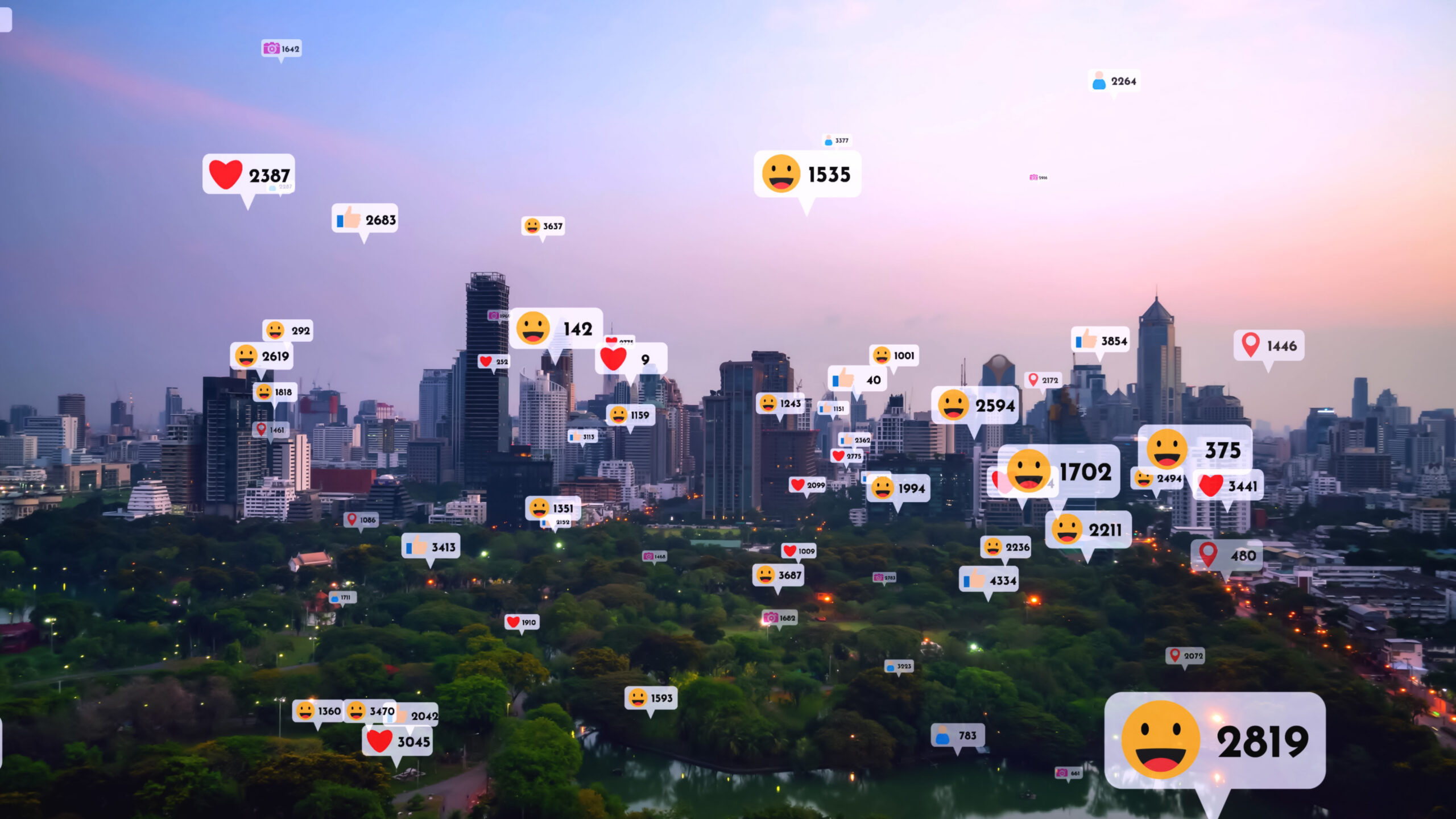
Storytelling in Digital Media: Creating Impact
Over the span of human history, the dominant forms of mass communication have continued to evolve in line with technology. From purely oral culture to the development of writing, the invention of the printing press to the arrival of electronic communications, the media we use to share information and ideas have always been the focus of innovation and change.
But one thing has always been constant. No matter what form media takes, storytelling has always been central to how we communicate. From shared stories around the campfire to the first printed novels, from ancient ritual and early theatre to the multibillion pound film industry, our hunger for stories doesn’t diminish, even as the form shifts.
And that’s equally true of digital media. With the arrival of the internet, smartphones and all the rest, we’re more connected than ever, more immersed in the media of communication forever.
Recent estimates suggest there are now 5.4 billion internet users in the world. More than 5 billion of those are also on social media.
And what do we do on social media? We share and consume stories. At an unprecedented scale.
This hasn’t escaped the notice of digital marketers. The intersection between storytelling and digital media has become a hot trend in brand building online, especially on social media. It’s now widely recognised that if you want to capture the attention of an audience, if you want to hold their engagement and use that as a foundation for building a rapport with them, storytelling is one of the most powerful tools at your disposal.
In a world where we’re all saturated with connections and digital content, cutting through and grabbing that all-important attention of your customers is of critical importance to businesses online. They need all the tricks and tools at their disposal. It just so happens that some of the best tools are very, very ancient indeed.
In this article, we’ll look at what modern science says about why storytelling is so powerful, before looking at some of the challenges and opportunities of digital storytelling. Finally, we’ll share some tips for crafting captivating narratives in digital media from our experience as a social media agency.
The Power of Storytelling
So what exactly is it about storytelling that makes it something businesses and marketers should be taking seriously?
Recent breakthroughs in neuroscience have shed some fascinating light on why narratives have such a hold on us. In simple terms, the evidence suggests that our brains have evolved not only to understand the world around us through story-like patterns but also that our emotional responses to stories hold our attention and build connections and lasting memories.
For example, a now-famous paper from 2010 proposed the idea of ‘neural coupling’ or mirroring as a hard-wired neurological response when we engage with stories. Brain scans show that when people watch, hear or read about a character in a story performing an action, their neurons fire as if they are performing the action themselves. Even if the situation is entirely fictional, we have an empathic response that, in a very real sense, makes us feel we are in the situation ourselves.
That psychological immersion also means we respond emotionally to situations we encounter in stories as if we are in them ourselves. Our brains trigger the release of powerful hormones involved in behaviours such as bonding, heightened states of awareness, memory formation and learning.
So in other words, at a deep level, stories grab our awareness and attention, they influence feelings and attachment, and they forge lasting memories. No wonder marketers are taking storytelling seriously!
The Digital Landscape: Challenges and Opportunities
Let’s move on to looking at storytelling in a digital context. In terms of the challenges and opportunities digital media presents, some of the key challenges barely need any introduction.
Digital media consumption has been accelerating at breakneck speeds for the past couple of decades, but there are now finally signs that it could be slowing down. That suggests we’re nearing saturation point – people just don’t physically have any more hours in the day to spend consuming digital media.
That means strategies for raising brand visibility and awareness online can no longer simply rely on churning out more and more. There’s no room in people’s lives for it.
As the savviest digital marketers have known for a long time, it’s quality, not quantity, that counts. In a saturated market, you have no choice but to focus on standing out from the crowd. And that’s easier said than done.
Digital media saturation also poses other challenges. It can lead to information overload, so people don’t retain what they consume anyway, and digital fatigue, which leads to pushback against the format itself.
Turning this around, however, digital media presents opportunities for making storytelling richer, more impactful and more effective than ever. In particular, it offers the following three things:
● Interactivity: Our brains are wired to immerse ourselves in stories. That is heightened even further if there is an element of active involvement in the story or storytelling process. In the past, that might have taken the form of group rituals, or participatory performances. Now, through the avenues of user involvement opened up by social media, and emerging immersive technologies like AR and VR, digital tech is reframing the possibilities for interactive, participatory storytelling, and breaking down barriers of distance and time in the process.
● Multimodality: Another major strength of digital storytelling is that it allows stories to be told in lots of different ways, all at the same time. Text, images, audio, and video can all be combined, opening new creative possibilities. Another benefit to this is that people prefer to consume media in different ways. Some people are more visually inclined, others like to read, others still to listen etc. Multimodal possibilities help you to cater for everyone with your storytelling.
● Data and analytics: Finally, it’s impossible to talk about the benefits of digital in any sphere without talking about data. By its very nature, consumption of digital media leaves behind a rich breadcrumb trail of data that allows you to analyse usage patterns, preferences, trends, engagement levels and more.
When you can see in numbers what kind of stories hit home the best, when, and with whom etc, it’s like a cheat code to creating your best content every time. And as is well ingrained in all marketing practice, data also helps you understand your audiences better, so you can build narratives around their interests, viewpoints, needs etc.

Crafting Captivating Narratives in Digital Media
So how can you use this emerging understanding of the power of storytelling, coupled with the opportunities digital media opens up, to create truly captivating online narratives around your brand? Here are our top tips.
Put people at the heart of every story
You’ll remember that, in the concept of neural coupling, the empathic reaction people literally feel when engaged with a story comes about from the actions of characters. This makes characters/people critical to good storytelling. We recognise agents similar to ourselves in a story, identify with them, and respond in a powerful, personal way.
The business scientist and psychologist Paul J Zak builds on this to argue that the way our brains respond to character helps us to better understand points that are being made through storytelling. And, crucially for businesses and marketing, it also inspires action and collaboration.
Who should be the characters in your story? Well, your audience, of course. Or at least figures that are easily relatable to your target audience. That comes back to data, knowing who your audience are, and building stories for and about them.
Build a plot around problems and solutions
You’ll come across various models for how to structure a narrative effectively, from the classic ‘story pyramid’ to circles to waves. But all of them follow the same basic underlying formula – characters experience some kind of problem, and characters work through to a solution.
In films and books, this can be spun out into cycles of crisis after crisis, ordeal after ordeal, building the dramatic tension to an emotionally satisfying resolution. For marketing purposes, the main thing to focus on is demonstrating value – here’s a problem you can relate to, this is how we can help. And because it’s spun into a story, it’s relatable, easy to understand and memorable for your audience.
Be visual
The human brain processes information in image form in as little as 13 milliseconds, which is 60,000 times faster than it takes us to process text. So if you want to make an impact quickly and efficiently with your brand storytelling, visual elements really are a no-brainer (excuse the pun!)
As mentioned previously, one of the big opportunities offered by digital storytelling is the ability to work in different media at the same time, which makes it easier than ever to incorporate visual elements even as you harness the benefits of other media.
As for tips on approaching the visual side of digital storytelling, one fascinating study has suggested that the brain prioritises remembering images that are harder to explain. So that’s your cue to exercise some artistry in your visual storytelling.
Use tone and delivery to bring your stories to life
Speaking of artistry, there’s a lot of hype around at the moment about how Gen AI platforms like ChatGPT can fool examiners when writing academic essays and such like. Which is nothing to be sniffed at. But could Gen AI do such a good job with a captivating story?
A lot of marketers are finding that, when it comes to wanting something expressive or captivating, Gen AI falls well short. And the reason boils down to the manipulation of tone and expression. Academic essays follow a fixed, predictable formula and stick to a neutral tone – easily replicable, perfect for Gen AI. But good storytelling is different. We’ve talked about the science behind storytelling’s impact. But there’s artistry in how you achieve that.
The tone is essential in good storytelling. Remember, narrative was originally an oral medium, stories around the campfire, or tales recited in performance. Think about the best keynote speech you’ve ever attended or the best TEDTalk you’ve watched. The speaker is spinning a story. But a lot of its power comes from the delivery. It comes from their manipulation of tone.
You don’t have to tell a story orally to make great use of tone and expression. But what you do need is good control of delivery, knowing when to emphasise and when to hold back, when to be playful and when to be serious and so on. Again, reading/knowing your audience plays a key role.
Looking for a social media and content marketing agency to help you tell the story of your brand? Get in touch with Key Element today.



